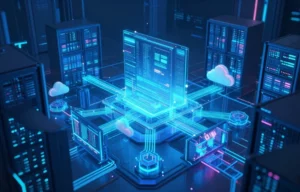
Prefer to listen instead? Here’s the podcast version of this article.
Have you ever wondered how companies like Walmart use facial recognition software to identify people as they enter a store or how your phone can track objects in the world around you? The answer lies in object recognition and tracking.
Object recognition and tracking technology use computer vision algorithms to identify objects in an image or video. These algorithms use advanced machine-learning techniques to detect objects based on their size, shape, color, texture, location, and other features. Many are likely familiar with facial recognition technology, a type of object recognition that is specific to using facial features (the object) to identify people. Once an object has been identified, the algorithm tracks it as it moves through the frame of the camera or image.
If you are a homeowner with a camera-based security system, then you are familiar with one of the benefits: security and safety. Many systems use object detection to recognize, identify, and notify homeowners of activity. When it comes to the professional context, the benefits are wide-ranging across industries, including the following:
With its growing adoption and continued advancements, object recognition technology is poised to become an indispensable tool for businesses looking to stay ahead of the curve. From automating tedious tasks in manufacturing to tracking inventory levels in warehouses and retail stores to providing valuable insights into customer behavior in the hospitality industry, object recognition technology has the potential to transform the way businesses operate. This technology can improve efficiency, increase accuracy, and provide valuable data that can be used to inform business decisions and drive growth.
Object recognition and tracking are achieved by combining techniques, including feature detection and matching, object classification, and object tracking. Feature detection and matching involve extracting features from an object or scene, such as lines and shapes, and comparing these features to data from a database. Object classification allows objects to be classified into different categories (e.g., cars, people, animals). When it comes to artificial intelligence, methods such as computer vision, machine learning, and deep learning algorithms are implemented to produce outcomes.
Computer vision algorithms are used for feature extraction and matching, object classification and object tracking. Machine learning algorithms are used to classify objects and improve accuracy, while deep learning algorithms are used to detect objects with more complexity and accuracy.
Deep learning techniques, such as convolutional neural networks, can quickly analyze large amounts of data and identify objects with high accuracy. Additionally, optical flow and background subtraction techniques can be used to increase accuracy and speed up the tracking process. Finally, algorithms such as histogram equalization can be used to improve the results of object recognition and tracking in low-light conditions.
Object recognition and tracking are two of the most critical trends in computer vision. In the future, object recognition and tracking technologies are expected to become even more powerful and reliable. More sophisticated algorithms and sensors will allow for better accuracy. Additionally, cloud and edge computing will enable real-time data processing and analysis. This will allow faster and more accurate object recognition and tracking. Furthermore, advances in artificial intelligence will allow machines to learn from their environment and adapt to changing conditions.
Object recognition and tracking technologies have already been implemented in many industries, such as security, healthcare, retail, entertainment, manufacturing, and more. As these technologies continue to improve over time, they will likely become even more pervasive across all aspects of our lives – from identifying people at airports to helping doctors diagnose diseases more efficiently – making our lives easier and safer than ever! With its myriad of potential applications, it’s clear that this technology will play an essential role in our future lives.
WEBINAR